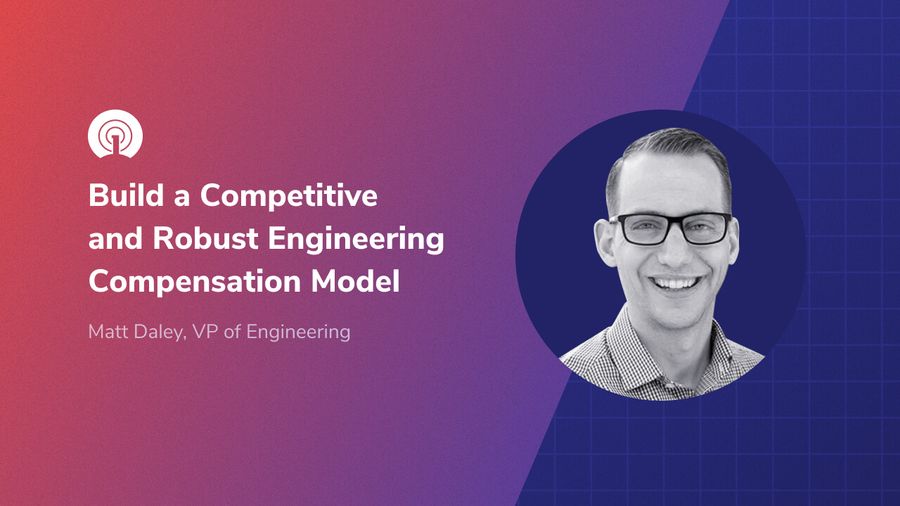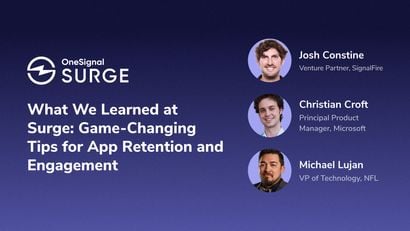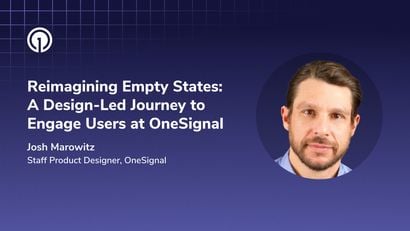Today’s software engineering talent market is great for job seekers. Companies need to be hyper-competitive in order to attract and retain great folks. While culture, impact, and learning are all crucial, compensation remains a key ingredient to the success of any talent program.
In this article, we’ll outline six steps to build an engineering compensation model that’s fair and competitive.
Step 1: Identify Your Desired Talent Profile
Before you can make a compensation model, it’s important to identify the types of people you want on your team. At a minimum, consideration for the type of role and seniority should be top of mind. For example, sub-disciplines of software engineering include mobile development, web development, data engineering, machine learning, site reliability engineering, etc.
With regard to seniority, it’s important to consider what will work best for you and your company’s needs. Different teams benefit from different combinations of senior and junior contributors. Depending on the size of your company or the state of your technology, a team composed of more senior engineers might be appropriate. For more mature teams, it might be best to hire across a wider variety of seniorities to provide great mentorship and support for junior engineers as well growth and leadership opportunities for senior engineers.
Step 2: Perform Market Research
With your desired employee profile in mind, it’s time to conduct some research.
Compensation Research Resources
At OneSignal, we utilize a broad range of resources including:
- Option Impact: Option Impact, part of Shareworks Equity Compensation Solutions, allows all eligible companies that provide compensation data access to the full dataset at no cost.
- Carta Total Comp: In addition to using Carta for research, we also use Carta to manage our employee option grants with an annual subscription.
- University of Waterloo Co-Operative Education Earnings Data: As a Waterloo grad myself, I spent a lot of time considering this resource. It remains a useful input for our intern compensation packages.
Other Key Salary Considerations
In this phase of the process, it’s important to consider where your business wants to land in the market in terms of total compensation relative to other businesses of comparable size. For most businesses, it’s reasonable to target a modest percentile ranking in the industry (e.g. 50th percentile). Your choice here will depend on the problems your business faces and ultimately the level of aptitude on the team that will be required to win at those challenges.
At OneSignal, we’re proud of our world-class team. Our technology is used by billions and powers the world’s messaging. We believe in empowering our teammates to be self-directed to address our most challenging problems autonomously. This is a challenge we feel is only suited to individuals that are extremely driven and passionate. That’s why we target the 90th percentile total compensation for our engineering team. 🚀
Step 3: Define Your Levels & Bands
Once you've collected compensation data, you can move on to define specific levels and expectations associated with different salary ranges. These are often referred to as "bands."
Defining and measuring success at varying levels of seniority is a topic unto itself! The good news is that we already have an article on how to introduce an engineering Career Ladder to your company.
Defining a band for salary and for equity for each level of your career ladder helps ensure fairness across your team. It also ensures that the role reasonably matches the compensation. We’ve all heard of companies that try to hire someone with an enormous amount of experience for an entry-level position that pays very little — if your career progression framework and corresponding compensation bands are crafted with care, you can avoid this embarrassing situation!
With regard to the type of compensation offered, certain companies will provide a consistent salary whereas others will use bonuses. For sales roles, there will almost always be a variable compensation component depending on the performance of the individual. Choosing between offering bonuses versus a strictly salary-based compensation format is a cultural decision that depends heavily on your particular business, your values, and the stage of your enterprise.
Bands should be reviewed with your finance and executive team to ensure alignment and streamline the approval process. It’s easy to approve an offer for a candidate within well-defined bands and clear interviewing guidelines.
Step 4: Clearly Communicate to Candidates & Employees
After you've created a compensation model, it's important to be transparent about it. Your recruiting and engineering management teams should be armed with your research and framework and be prepared to disclose it to candidates upon request.
Best Practices for Compensation Conversations
In January 2018, California’s Equal Pay Act became the first in the country to ban employers from asking applicants about their salary history. It also requires employers to disclose the pay range for a job if an applicant asks for it after an initial interview. Employer requirements vary state by state, but we believe it's best practice to have this information available to candidates in all geographies.
Remote Work Considerations: Defining Compensation by Region
With the rise of remote work during the COVID-19 pandemic, many companies have had to think about location-based compensation for the first time. As part of your compensation framework, consider if your business will adjust bands depending on an employee's location and cost of living. Whatever you chose, it's important to clearly communicate this policy to candidates and employees alike.
OneSignal recently adopted a Remote-First policy and we have chosen not to make any geography-specific salary adjustments. We’re keen to provide opportunities to talented individuals across the globe, regardless of their country of origin. That said, other large companies have adjusted compensation based on locality.
Providing salary ranges upon request is the bare minimum of what we recommend. Businesses must choose what level of transparency is right for them, and often keep data close to the chest as a negotiating tactic. Some companies will provide broader band ranges, while others choose to post the salaries of existing staff online!
At OneSignal, we value transparency balanced with employee privacy. As a happy medium to the extremes above — and because it’s good for both job seekers and employers — I’m happy to report that we provide publicly accessible salary ranges for all engineering roles via AngelList!
The value of employee equity in the context of a growing startup deserves its own blog post. Communicating the strike price, the number of outstanding shares, and an employee's bottom line across different business outcomes is table stakes. We provide this information upfront to every candidate that is presented with an offer. In other companies, these details are often omitted from interviews and must be requested by the prospective employee. Because equity is a complex topic that not all candidates are familiar with, we prefer to present all the details clearly. At OneSignal, we also have a rare and very employee-centric policy to provide a 10-year exercise extension to employees with greater than two years of tenure. This is one of many benefits we highlight as part of our hiring process.
Step 5: Reward Your Team
One of my greatest joys as an engineering leader is supporting the growth of the people on my team. I strongly believe in proactively adjusting compensation when people grow and level up.
The most important word here is proactive. When a person with a high growth trajectory needs to ask for a raise, as a management team, you're too late! If someone must ask for a raise, there is a greater likelihood that they already feel undervalued or underappreciated leading into that conversation.
Our career progression framework and performance review processes provide a common language around which engineering leaders and financial teams can be empowered to adjust compensation fairly. We consider each employee's role with regard to how they meet or exceed expectations for their level. We always strive to improve and believe that our processes provides a meaningful foundation for equity across our diverse team.
Consideration should be given to vesting schedules as well when employees are offered equity refreshers. Back-weighted schedules can offer a curve-smoothing effect on equity vesting. This helps total compensation remain consistently competitive as tenure increases.
Step 6: Iterate & Adjust Your Model as You Grow
As your company grows and scales, what worked yesterday might not work today. When your company reaches a certain size, it may make more sense to offer smaller pieces of equity and larger cash components to compensate for the size of your workforce. As you grow, your employee option pool might be smaller and you may need to adjust accordingly to remain competitive. As an engineering leader, partnering with your Head of Talent or equivalent is key to success at scale! 📈
Join Our Talented Team
If you enjoyed our transparent and proactive approach, consider working with us! We are hiring for a number of roles, including a Head of Talent!
View our Job Openings



